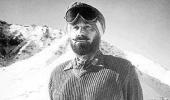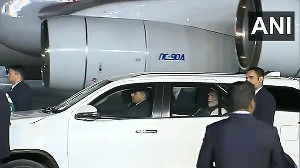In what was perhaps the most critical meeting before full-scale war broke out, Shastri defined India's immediate war objectives to his defence minister, army, and air force chiefs: 'To defend against Pakistan's attempts to grab Kashmir by force and to make it abundantly clear that Pakistan would never be allowed to wrest Kashmir from India; To destroy the offensive power of Pakistan's armed forces...'
A fascinating excerpt from Shiv Kunal Verma's must-read 1965: A Western Sunrise India's War With Pakistan.

In Srinagar, the army chief General J N Chaudhuri knew that Pakistan had breached the IB to launch its tanks.
Amazingly, in Army HQ, the adjutant general, Lieutenant General P P Kumaramangalam, had absolutely no idea that Pakistan had launched its offensive earlier that morning.
In the absence of the chief, Kumaramangalam conducted the morning briefing at 1000 hrs for Defence Minister Chavan and, based on the previous evening's appreciation forwarded by 15 Corps, confidently predicted that it would take Pakistan a minimum of sixteen days to move troops from their existing positions to the CFL (cease fire line) to launch an attack anywhere in Jammu and Kashmir.
After the briefing, Chavan left to visit a hospital when there was an urgent phone call for him.
The defence secretary, P V R Rao, informed the defence minister at 1100 hrs that Pakistan had launched an attack in the Chhamb Sector with armour support.
At that very moment, his positions falling one by one despite fighting fiercely, Brigadier Manmohan Singh was putting out a desperate plea to his immediate higher headquarters, 15 Corps, asking for air support.
This message reached Srinagar while Chaudhuri was still there. The decision to use the air force was not for the COAS to take, for it needed the nod of the Government of India.
By then, General Chaudhuri was fully aware of what was happening on the ground and he accordingly briefed Prime Minister Shastri on the telephone.
Since the request for air support had already been communicated to the army chief, it is perhaps fair to presume that this was also communicated to Shastri.

Having boarded the special IAF Dakota DC-3 in Srinagar, Chaudhuri instructed the pilots to take a detour via the Pathankot air base.
The unscheduled and unheralded arrival of the army chief at the air force base took the station commander, Group Captain (later Air Commodore) Roshan Lal Suri, completely by surprise.
Chaudhuri was in Pathankot for approximately two-and-a-half hours, meeting with the Vampire and Mystere COs.
Astonishingly, not once did he mention the situation in Chhamb.
Chaudhuri discussed the use of Vampires against the raider columns should the need arise, and asked the station commander to have armed aircraft standing by.

The chief finally landed at Palam in New Delhi at 1600 hrs, from where he rushed straight from the aircraft to the defence minister's office while his DMO, Narendra Kumar, went to his office in South Block to execute the orders he had dictated to him on the flight from Pathankot to Delhi.
Chaudhuri's little detour to Pathankot finds mention in the defence secretary's version of events as well.
The army chief had squandered two-and-a-half precious hours. His attitude that the air force was a subordinate service has been criticised by Air Marshal P C Lal as well.
What is even harder to believe is that he said nothing about Chhamb to the Pathankot station commander, preferring to just 'chat with the pilots' about ground support strikes in the Valley.
This was not the first instance where the generals did not want to disclose the actual target to the IAF.
At 1300 hrs Chavan had returned to his office from the hospital and since then everyone had been waiting anxiously for the army chief.
By the time Chaudhuri reached Chavan's office, it was 1630 hrs. By this time, the situation had become desperate.
The first thing Chaudhuri did was to take Arjan Singh aside and the two discussed the situation in Chhamb.
Five hours had elapsed since Brigadier Manmohan Singh had asked 15 Corps for air support and even though the battered Indian positions were holding out, it was only a matter of time before Pakistani armour would break through.
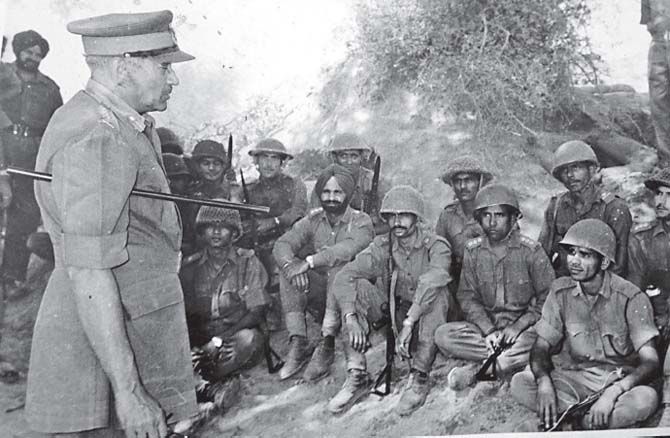
After taking off from Srinagar, General Chaudhuri had no opportunity to receive any further updates.
Launching the air force was one thing, but Chaudhuri now also wanted permission to authorise immediate counter-attacks across the CFL to relieve the pressure on 191 Infantry Brigade.
Both the COAS and the CAS were aware that as per the existing norms, the Emergency Coordination Committee (ECC) needed to give the defence minister the go-ahead to involve the air force, for this could escalate into all-out war.
The COAS and the CAS then entered the defence minister's inner office, where Chavan and Rao were waiting, and Chaudhuri formally asked for permission to launch the aircraft and retaliate across the CFL.
Chaudhuri said he was coming from Pathankot and the aircraft were ready to go.
Arjan Singh pointed out that there was a real risk of hitting our own positions during the air strikes, for there was no way of knowing friend from foe.
Surprisingly, Chavan did not make any move to pick up the phone to speak to the prime minister.
Then in the next few seconds, two of the most crucial decisions were taken by Yashwantrao Balwantrao Chavan, the fourth defence minister of India.
There was no time to go to the ECC or even place a call to Prime Minister Shastri. He just said, 'Go ahead!' It was 1650 hrs.
Permission had been given to cross the IB and launch an attack in the Punjab to relieve the pressure on Akhnoor and Chhamb.
While the first part of the defence minister's 'go ahead' that related to the IAF was acted on within minutes, the army needed time to launch the attack.
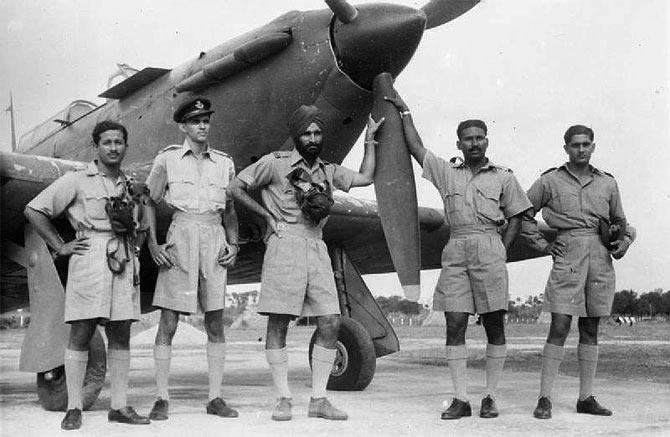
According to Chavan's secretary R D Pradhan, later the Union home secretary and governor of Arunachal Pradesh: 'It was later in the evening that he [Chavan] informed the ECC of the air strike and got the prime minister's formal authorization on orders given to the COAS to launch an attack on the Punjab front... As a footnote to history it is interesting to recall that at that time there were reports that it was the prime minister who unhesitatingly gave orders to retaliate. Chavan's diary throws light on what actually happened on the late afternoon of 1 September 1965 and his account is corroborated both by the then defence secretary and the chief of army staff.'
This is likely a bit of deft footwork on the part of Pradhan to give Chavan more credit for his 'decisiveness'.
General Chaudhuri had spoken with the prime minister on the telephone before taking off from Srinagar and had apprised him of the situation in Chhamb.
There is no doubt that Chavan and Shastri had discussed the eventualities before meeting Chaudhuri. The defence minister would have known he had the full backing of his prime minister.
Chaudhuri wanted to simultaneously launch both 1 and 11 Corps across the IB into Pakistan.
However, he was so obsessed with secrecy that the date and time of the launch were hidden even from his own officers.
However, despite all the precautions being taken by the COAS, Pakistan's high commissioner to India, Mian Arshad Hussain, sent a message through the Turkish embassy that India was planning to attack Lahore on 6 September.
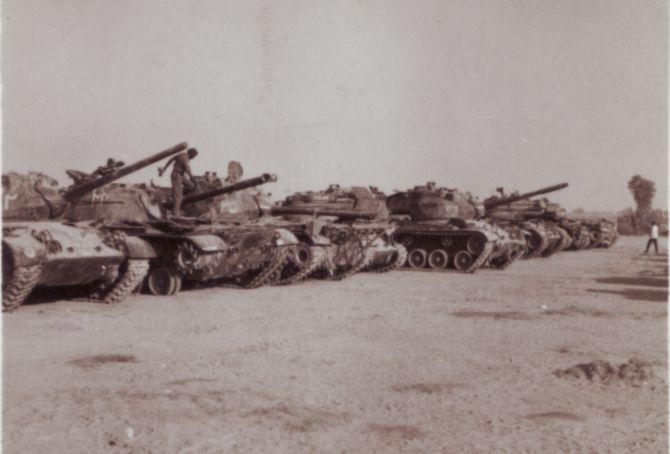
In New Delhi, ever since the decision to go on the offensive across the IB in the Punjab had been taken by the government, all eyes had been on the developing situation on the Akhnoor front and on the attacks and counter-attacks in the air.
In his diary, in which he noted events either the same night or the next day, Chavan records: '2 September: I got further details of the air strike in the morning. It has certainly escalated matters. But at the same time stabilized the conflict -- perhaps temporarily in the Chhamb Sector; meeting of leaders of Opposition... made a report to them regarding latest development. They were in co-operative spirit; ECC Meeting -- U Thant's report to the Security Council Members discussed.
I insisted on military advantages being maintained. Those UK proposals look like a trap. Prime Minister appeared to be strong. I hope he maintains this attitude; COAS came to unburden his mind -- looked somewhat depressed.'
On 3 September he noted the news about the successful air battle in Chhamb.
'COAS came in the evening. He was in good mood. He said he was sorry that he was somewhat depressed yesterday. I can understand this. He has to open his mind, pour it out somewhere. It is good he is doing with me; ECC meeting at 9 pm.'
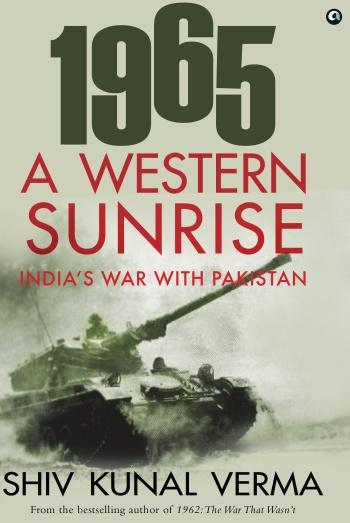
Even as the army chief's morale was oscillating, diplomatic pressure was steadily building to de-escalate the situation.
U Thant's message stated: 'There are alarming reports indicating a steady escalation of the fighting in the air and on ground, involving regular forces on both sides.'
Chavan was determined to hold fast so that the Indian Army could execute the task that had been given to it.
In what was perhaps the most critical meeting before full-scale war broke out, Shastri defined India's immediate war objectives to his defence minister, army, and air force chiefs: 'To defend against Pakistan's attempts to grab Kashmir by force and to make it abundantly clear that Pakistan would never be allowed to wrest Kashmir from India; To destroy the offensive power of Pakistan's armed forces; and to occupy only minimum Pakistan territory necessary to achieve these purposes which would be vacated after the satisfactory conclusion of the war.'
Excerpted from 1965: A Western Sunrise India's War With Pakistan, with kind permission from Aleph Book Company.
Feature Presentation: Rajesh Alva/Rediff.com

